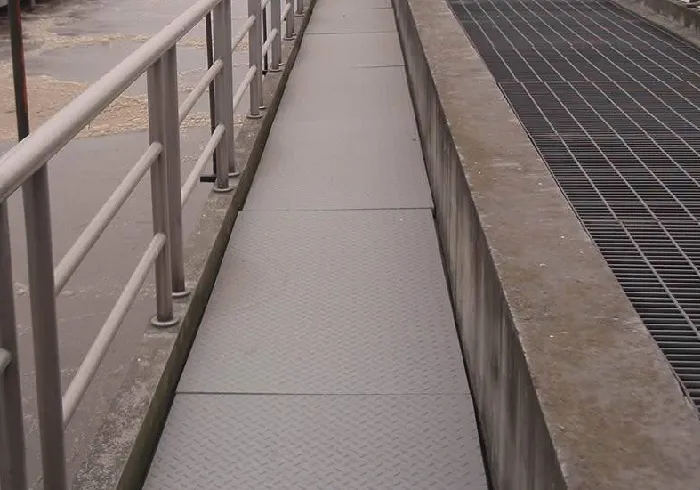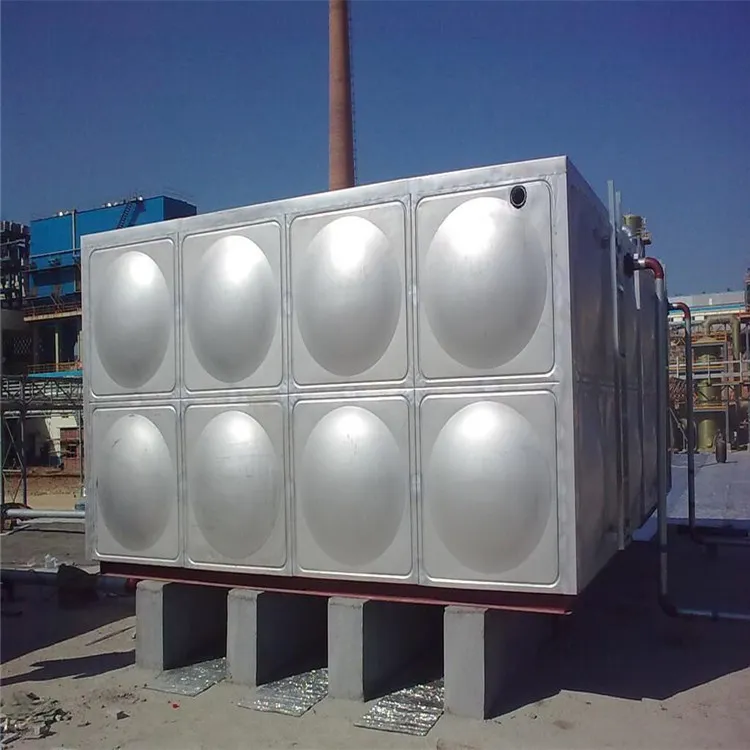loading...
- No. 9, Xingyuan South Street, Dongwaihuan Road, Zaoqiang County, Hengshui, Hebei, China
- admin@zjcomposites.com
- +86 15097380338
- Welcome to visit our website!
Premium FRP C Channels Corrosion-Resistant & Lightweight Solutions
- Introduction to FRP structural profiles and market growth drivers
- Technical performance advantages of pultruded FRP C channels
- Comparative analysis of leading manufacturer specifications
- Material composition innovations enhancing structural properties
- Custom fabrication solutions for specialized applications
- Implementation case studies across industrial sectors
- Value optimization strategies for procurement decisions

(frp c channel)
Understanding FRP C Channel Engineering Solutions
Fiberglass Reinforced Polymer (FRP) C channels represent cutting-edge structural solutions transforming construction and industrial applications. These pultruded profiles deliver exceptional strength-to-weight ratios exceeding 900 MPa tensile strength while weighing 75% less than equivalent steel sections. Market analysis indicates 12.7% CAGR growth through 2028, driven by corrosion resistance requirements in chemical processing (32% of demand), transportation infrastructure (28%), and marine applications (19%). Unlike traditional materials, FRP channel systems maintain dimensional stability across temperature fluctuations from -60°F to 180°F without galvanic corrosion concerns.
Technical Advantages of Pultruded Structural Profiles
Advanced manufacturing techniques enable precise control over mechanical properties in FRP channels. The pultrusion process aligns continuous glass fibers (typically 70-75% by volume) within thermosetting resin matrices like vinyl ester or polyester, yielding anisotropic materials optimized for longitudinal loading. Key performance metrics demonstrate:
- Compressive strength: 480-620 MPa depending on fiber orientation
- Modulus of elasticity: 23-30 GPa exceeding aluminum alloys
- Thermal expansion coefficient: 6 x 10-6 in/in/°F (1/4 that of steel)
- Dielectric strength: 300-400 volts/mil for electrical isolation
Manufacturer Comparison Matrix
| Manufacturer | Fiber Content | Max Section Depth (in) | Load Capacity (lbs/ft) | Temperature Range | Price Range ($/ft) |
|---|---|---|---|---|---|
| Bedford Reinforced | 70% E-glass | 8" | 1,450 | -70°F to 180°F | $12.50-$27.80 |
| Strongwell | 75% E-CR glass | 12" | 2,100 | -40°F to 160°F | $14.20-$31.75 |
| Creative Composites | 65% AR-glass | 6" | 980 | -60°F to 170°F | $10.75-$22.40 |
| Tencom | 72% S-glass | 10" | 1,870 | -100°F to 200°F | $18.40-$35.60 |
Innovative Material Formulations
Beyond standard E-glass reinforcements, premium FRP channel formulations integrate advanced materials to address specific environmental challenges. Corrosion-resistant AR-glass fibers containing zirconium dioxide demonstrate 91% strength retention after 10,000 hours in pH 2 acidic environments. Fire-resistant variants incorporating hydrated alumina achieve Class A flame spread ratings with smoke density below 100. For high-voltage applications, boron-free glass compositions maintain consistent dielectric properties, with tracking resistance exceeding 600 minutes per ASTM D2303 standards.
Custom Engineering Configurations
Specialized applications demand tailored FRP channel solutions fabricated to precise technical specifications:
- Electrical raceway systems with UL94 V-0 flammability certification
- Seismic-resistant building connections featuring 3/8" thick flanges
- Marine dock components with ultraviolet-resistant gel coatings
- Chemical processing supports with FDA-compliant resin systems
Field modifications accommodate on-site requirements through specialized cutting and joining techniques. Mechanical fastening using stainless steel hardware provides immediate connections, while structural adhesives like methacrylates form permanent bonds developing 3,200 psi shear strength within 45 minutes.
Industrial Implementation Case Studies
Wastewater Treatment Retrofit (Detroit, MI): Installation of 18,500 linear feet of 6" FRP channels eliminated corrosion-induced structural failures in chlorine containment areas. The solution demonstrated 97% cost reduction compared to titanium support systems, with maintenance requirements decreasing from quarterly inspections to biannual visual checks.
Power Generation Facility (Phoenix, AZ): Implementation of customized FRP channel trays in switchgear rooms prevented electrical tracking incidents. The non-conductive support system achieved 100% compliance with NFPA 70E arc flash safety requirements while reducing installation time by 40% versus fabricated aluminum alternatives.
Balancing FRP Channel Price and Lifetime Value
While initial material investments in FRP channels range 15-40% above painted steel, lifecycle analysis reveals compelling financial advantages. Typical ROI periods of 3-7 years materialize through elimination of corrosion-related maintenance, which consumes 22% of facility budgets in aggressive environments. Operators achieve maximum value through:
- Bulk procurement programs reducing per-unit costs by 12-18%
- Preventive coating applications extending service life by 15 years
- Design optimization minimizing material waste during installation
Leading fabricators now provide online configuration tools that generate instant price quotes based on dimensional requirements and environmental ratings. Production efficiency initiatives have decreased manufacturing lead times to 3-5 weeks for custom orders, accelerating project timelines without compromising structural integrity requirements.

(frp c channel)
FAQS on frp c channel
Q: What is an FRP C Channel?
A: An FRP C Channel is a structural component made from Fiber Reinforced Polymer (FRP), designed in a C-shaped profile. It offers high strength, corrosion resistance, and is lightweight, making it ideal for construction and industrial applications.
Q: What are the common uses of FRP channels?
A: FRP channels are widely used for support structures, framing, and reinforcement in corrosive environments. They are popular in chemical plants, marine settings, and infrastructure projects due to their durability and low maintenance.
Q: What factors influence FRP channel pricing?
A: FRP channel price depends on material grade, dimensions (e.g., thickness and length), and order volume. Customization, such as UV resistance or fire-retardant coatings, may also increase costs.
Q: How does an FRP C Channel compare to traditional metal channels?
A: Unlike metal channels, FRP C Channels resist rust, chemicals, and electrical conductivity. They are lighter, easier to install, and have a longer lifespan in harsh environments, though initial costs may be higher.
Q: Where can I buy cost-effective FRP channels?
A: FRP channels are available from manufacturers specializing in composite materials or industrial suppliers. Comparing FRP channel prices and specifications across vendors ensures the best value for your project requirements.
-
The Rise of FRP Profiles: Strong, Lightweight, and Built to LastNewsJul.14,2025
-
SMC Panel Tanks: A Modern Water Storage Solution for All EnvironmentsNewsJul.14,2025
-
GRP Grating: A Modern Solution for Safe and Durable Access SystemsNewsJul.14,2025
-
Galvanized Steel Water Tanks: Durable, Reliable, and Ready for UseNewsJul.14,2025
-
FRP Mini Mesh Grating: The Safer, Smarter Flooring SolutionNewsJul.14,2025
-
Exploring FRP Vessels: Durable Solutions for Modern Fluid HandlingNewsJul.14,2025
-
GRP Structures: The Future of Lightweight, High-Performance EngineeringNewsJun.20,2025
